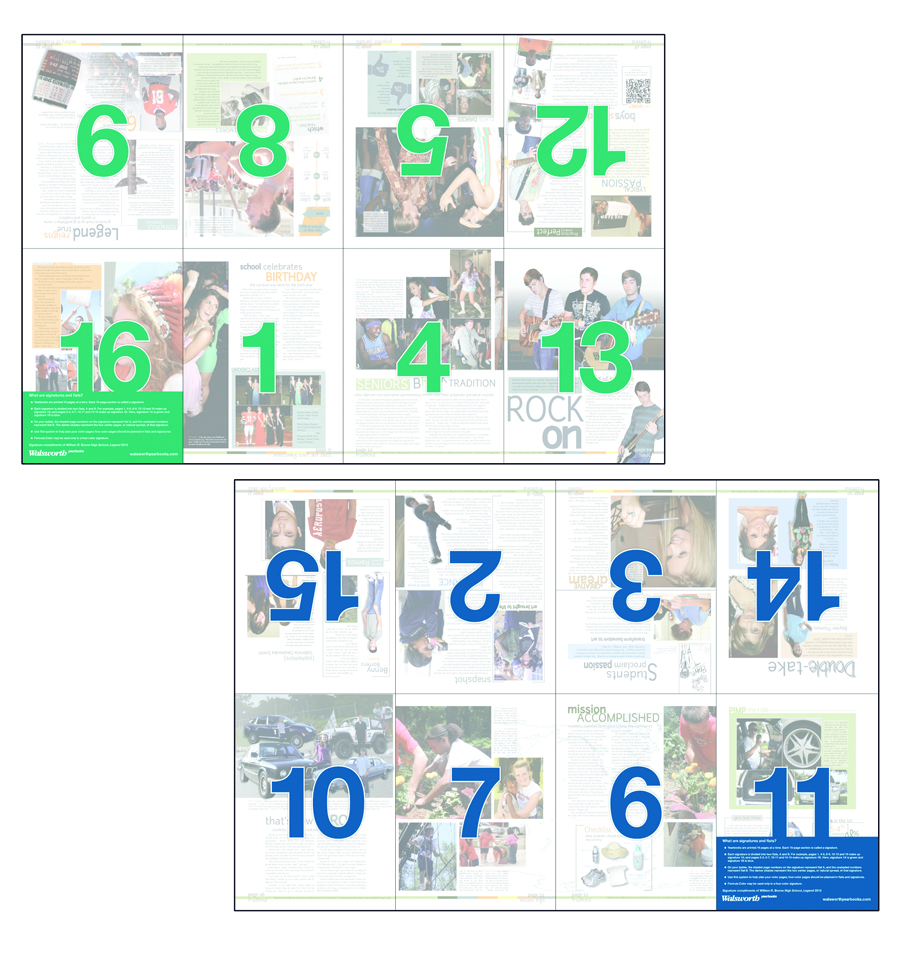List of stock questions for writers after
they have presented their first draft
At the beginning of the school year, have all staff members work together to generate a list of all the clubs, groups, sports and organizations within your school. Then, generate a corresponding list if one or two people within each group that would be key contact people in regards to activities, events and updates of their happenings. These people become BEAT CONTACTS.
Yearbooks are made up of 16-page signatures, always beginning with a right-hand page and ending with a left-hand page. In the printing process, a signature is a large sheet of paper on which eight pages (a flat) are printed on each side. After both sides have been printed, the sheet is folded and cut so the pages are in book form.
It’s a fact of life – students die. So do teachers. It is an emotional time for any school. But for publication staffs, emotions cannot rule your decisions. Your staff needs a clear policy so that all school deaths are handled equally, avoiding questions of favoritism.
I was about to give up when I remembered meeting Samuel Beckett at the NSPA convention last year in Seattle. I heard Beckett say that he had actually been a journalism teacher for several years and was presenting a session at the convention on how teaching yearbook had sparked his imagination for the tragicomedy, “Waiting for Godot.” In his session, he asked us to read selected scenes from the play to see the close connection. In fact, he said, although most people think he is writing about the angst of the 20th century, many of the scenes in the play are really about his frustration as a yearbook teacher trying to improve the academics section.
Once the theme is picked, the next decision involves presentation of the theme. How much theme is enough? The theme does not need to be spread across every page like peanut butter on a slice of bread. Like peanut butter, too much theme in too little space can gag a person.
Yearbook coverage is generally defined as the happenings at one school during one year. But what is a school? Sometimes a high school is one school with grades on separate campuses, or one school includes preschool through seniors in one or many buildings.
Covering the year chronologically is not as predominant as it once was, but there are good reasons for some schools to organize their yearbook coverage as events happen throughout the year.
High school yearbooks and newspapers provide students with real-world training and an opportunity to create and showcase their work. Despite these similarities, viewpoints on the roles for the yearbook and the newspaper are usually vastly different. However, with each passing year, the line of distinction seems to be getting blurry.
Our yearbook concept is not new. We are following the workshop adage: yearbooks should echo the year, the school, the students. And yet, something is changing.

